Hurricane Sandy, 10 years on: Is New York City ready for the next big one?
On 29 October 2012, Sandy hit New York City with blows so swift and severe that it changed neighborhoods forever. Ten years on, senior climate correspondent Louise Boyle looks at how the city is readying for what comes next

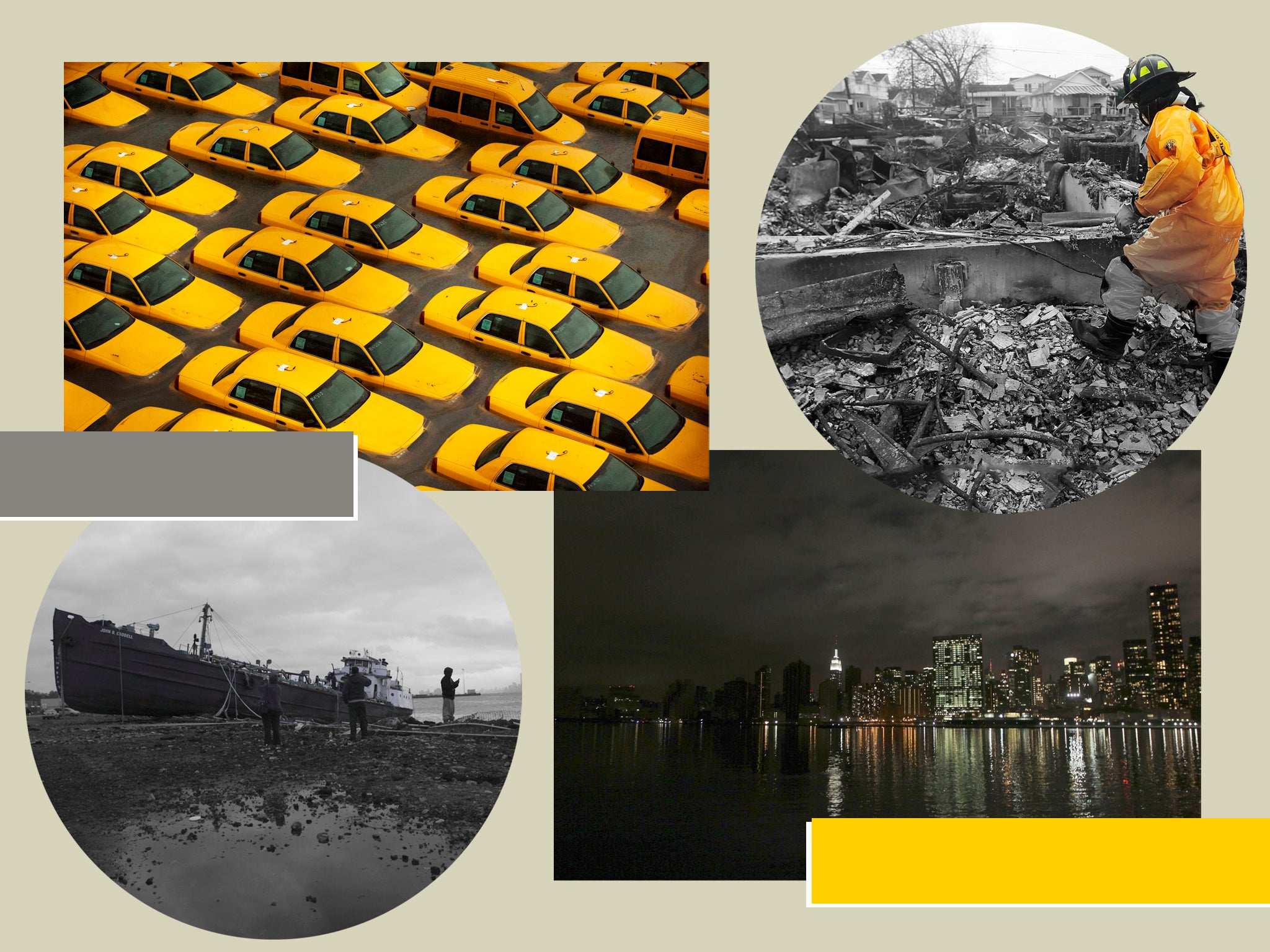
Ten years ago, Superstorm Sandy delivered a blow to New York that brought the indefatigable city to its knees.
The storm was incomparable to any in city record. A late bloomer of the 2012 Atlantic hurricane season, climate change and a confluence of weather conditions led to a storm surge of disastrous proportions. The rivers, harbors, canals and oceanfront that helped make New York the iconic city it is today, suddenly became its ultimate vulnerability.
Sandy was also a moment of reckoning for New York City: when the impacts of a climate crisis, long foretold, well and truly arrived.
And still, in the past decade, unabated fossil fuel-burning on an ever-hotter planet has dialled up storm intensity to rival that of Sandy, as the recent devastation in Florida from Hurricane Ian laid bare.
In 2021, Hurricane Ida revealed another deadly twist of climate-amped storms - rapid, record-breaking rainfall. Ida killed 107 people including 13 New Yorkers many of whom drowned as they tried to escape basement apartments.
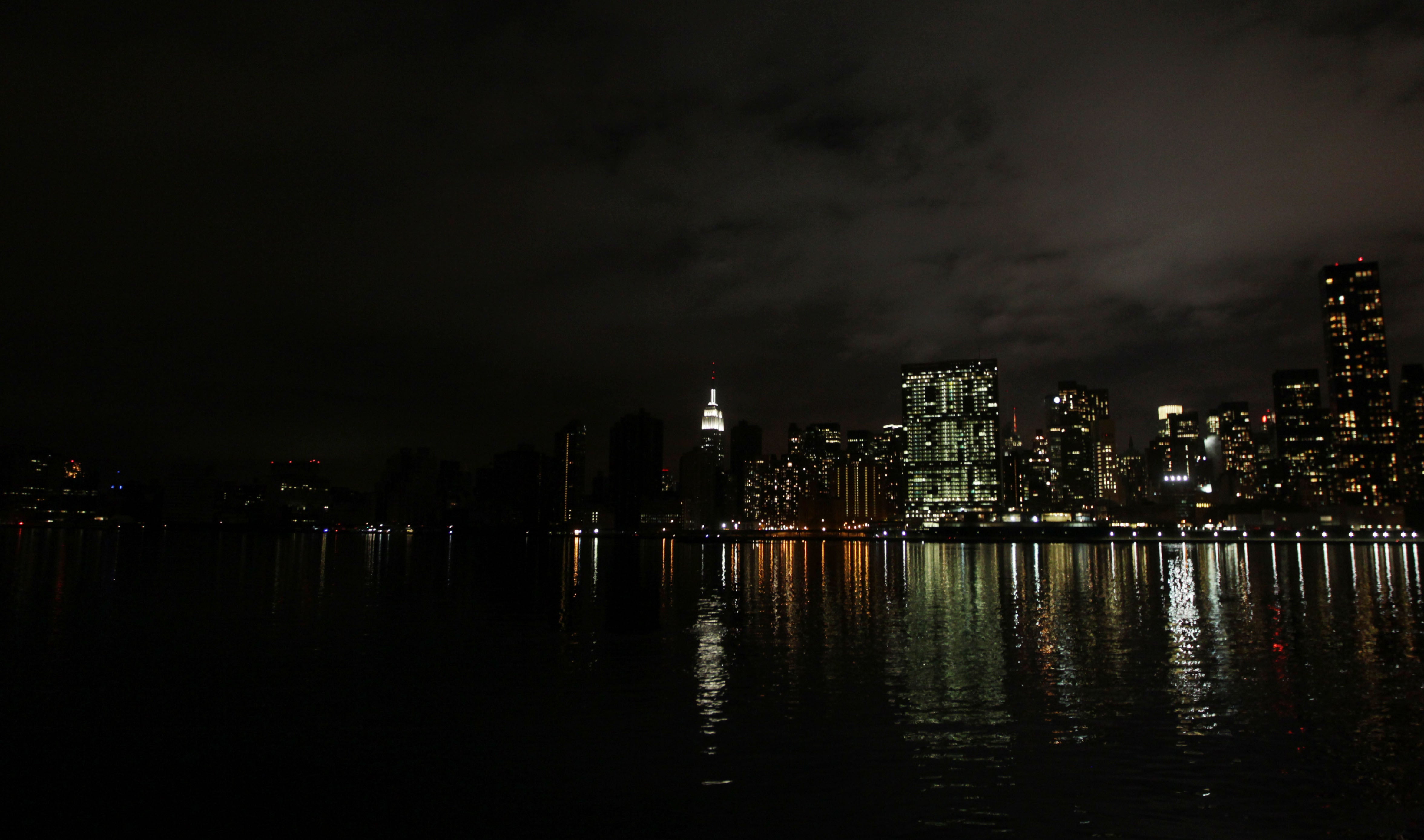
New York also has rising seas to contend with - one to 1.75 feet is expected by 2050 (a middling estimate from climate scientists which could be higher due to uncertainties around ice sheet melting). The city has already seen sea-level rise about one foot since 1900, which likely increased Sandy’s flood area by 25 square miles and impacted an additional 80,000 homes.
On the 10th anniversary, The Independent looks back at the storm which changed the city forever and what has been done to make New York more resilient.
And what can the challenges of New York - home to powerful players and deep pockets - tell us about how hundreds of other coastal cities will fare in a future of stronger storms?
Sandy’s wrath: 32ft waves, blackouts and fires erupting in floods
Sandy had already made landfall twice when it reached Brigantine, New Jersey, on 29 October, 2012.
Hurricanes in the Northeast typically spin out to the ocean but Sandy got jammed between other weather systems, leading to its now-infamous “left hook” towards New York City. The temperature that night in the Northeastern Atlantic was 3C above average, and the heat further whipped Sandy into a storm of immense power.
The timing could not have been worse. Sandy arrived at high tide and on a full moon in New York Harbor when water levels were elevated by about five feet. Packing 80mph winds and spanning 1,000 miles end-to-end, Sandy drove an enormous coastal surge ashore. The storm tide reached 14 feet with some 32-foot waves, higher than a two-storey building.
Seawater rushed into neighborhoods, flooding 17 per cent (51 square miles) of the city. Water in lower Manhattan rose to eight feet in some streets.
The blows were swift and severe. With an almighty crack, a transformer exploded at a electrical substation on the East River and plunged Manhattan into darkness from Midtown to the Financial District. Some two million people were left in a blackout, and without cell service.

Some 44 people were killed. The majority drowned in their homes on Staten Island and others were electrocuted by downed power lines in the water. Sandy impacted the entire Eastern Seaboard and the Caribbean, killing 233 people in all.
With most of New York’s critical infrastructure located in the flood zone, Sandy impacted hospitals, nursing homes, power stations, all of the wastewater treatment plants and a significant chunk of transport.
Some stations of the century-old subway system, the nation’s busiest, filled to their roofs with water. Most road tunnels into Manhattan were swamped, and train tunnels to Brooklyn and neighboring New Jersey. Runways flooded at the two major airports, LaGuardia and JFK, which sit below sea level.
A tanker was driven up a beach in Staten Island while in Queens, three miles of Rockaway boardwalk was obliterated. Breezy Point, which was home to a large number of 9/11 firefighters, erupted in a huge blaze caused by seawater seeping into electrical wiring. More than 100 homes were lost as fire crews fought flames and rescued people by boat in waist-deep in water. On City Island in the Bronx, piers were ripped away and a six-alarm fire broke out.
Around 300 homes were destroyed and more than 69,000 properties were damaged. A quarter of a million vehicles had to be scrapped.
New York City was not alone. Beyond the five boroughs, large areas of New York state and New Jersey were devastated. The Garden State had 38 deaths and 346,000 homes damaged or destroyed. Half the city of Hoboken was left underwater, and a large section of Atlantic City’s historic boardwalk destroyed.
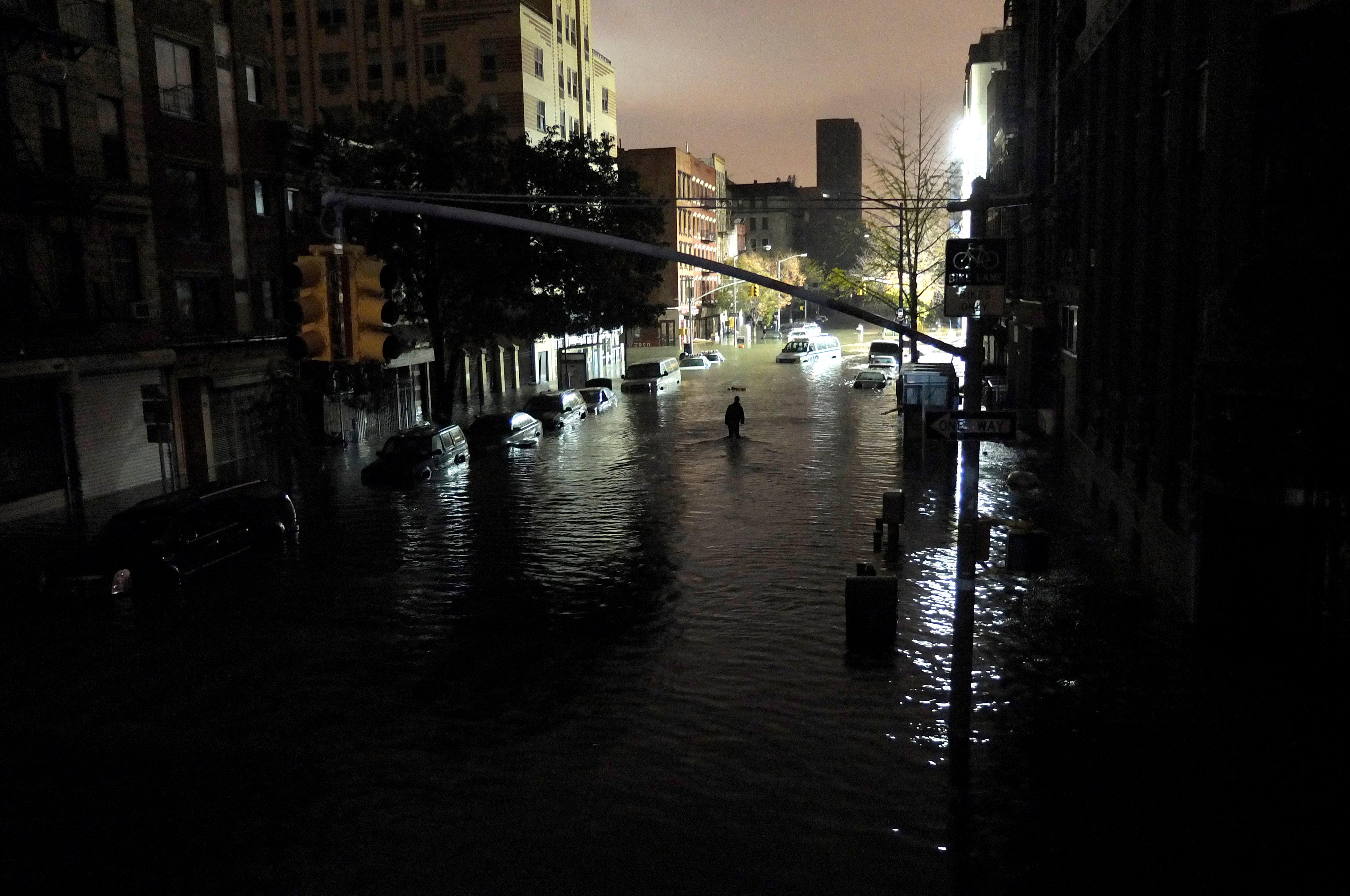
The aftermath: ‘We need to start talking about adaptation’
Sandy’s damages totalled $19bn in New York City (and more than $65bn in the US overall). It was the most expensive storm since 2005’s Hurricane Katrina, since been eclipsed by Harvey and Maria. Ian’s losses are still being calculated.
The city received $15bn in federal disaster relief and a further $4.2bn from the Department of Housing and Urban Development. The storm also shifted mindsets, said Craig Fugate, administrator of the Federal Emergency Management Agency (FEMA) at the time.
At a Council on Foreign Relations [CFR] event this week, he recalled President Barack Obama’s words after Sandy: “The debate about climate change is over. We need to start talking about adaptation.”
Up to that point, the US government was focused on cutting its carbon footprint - as if climate was something for the future “as opposed to something that was already changing,” Fugate said.
“[President] Obama started a shift in federal mindset about what we would need to do differently - that we can’t just rebuild the way it was, and we were going to have incorporate future risk into decision-making.”
Grappling with future risk while adapting more quickly to today’s extreme impacts now involves the interwoven work of thousands of climate scientists, public officials, planning and design experts in New York City alone. And while significant strides have been taken in resiliency, the city remains vulnerable.
In his 10-year assessment of post-Sandy resiliency work, New York City Comptroller Brad Lander described efforts as “plodding”.
“We are definitely not ready for another storm like Sandy,” said Amy Chester, managing director of Rebuild By Design, a nonprofit which grew out of a design competition after the storm, and which is involved in some of the city’s biggest initiatives.
“There are things that have changed but they aren’t enough to meet the level of destruction that Sandy presented. I think the big difference is that we understand what a storm like Sandy can do and how to prepare our property and lives,” she told The Independent.
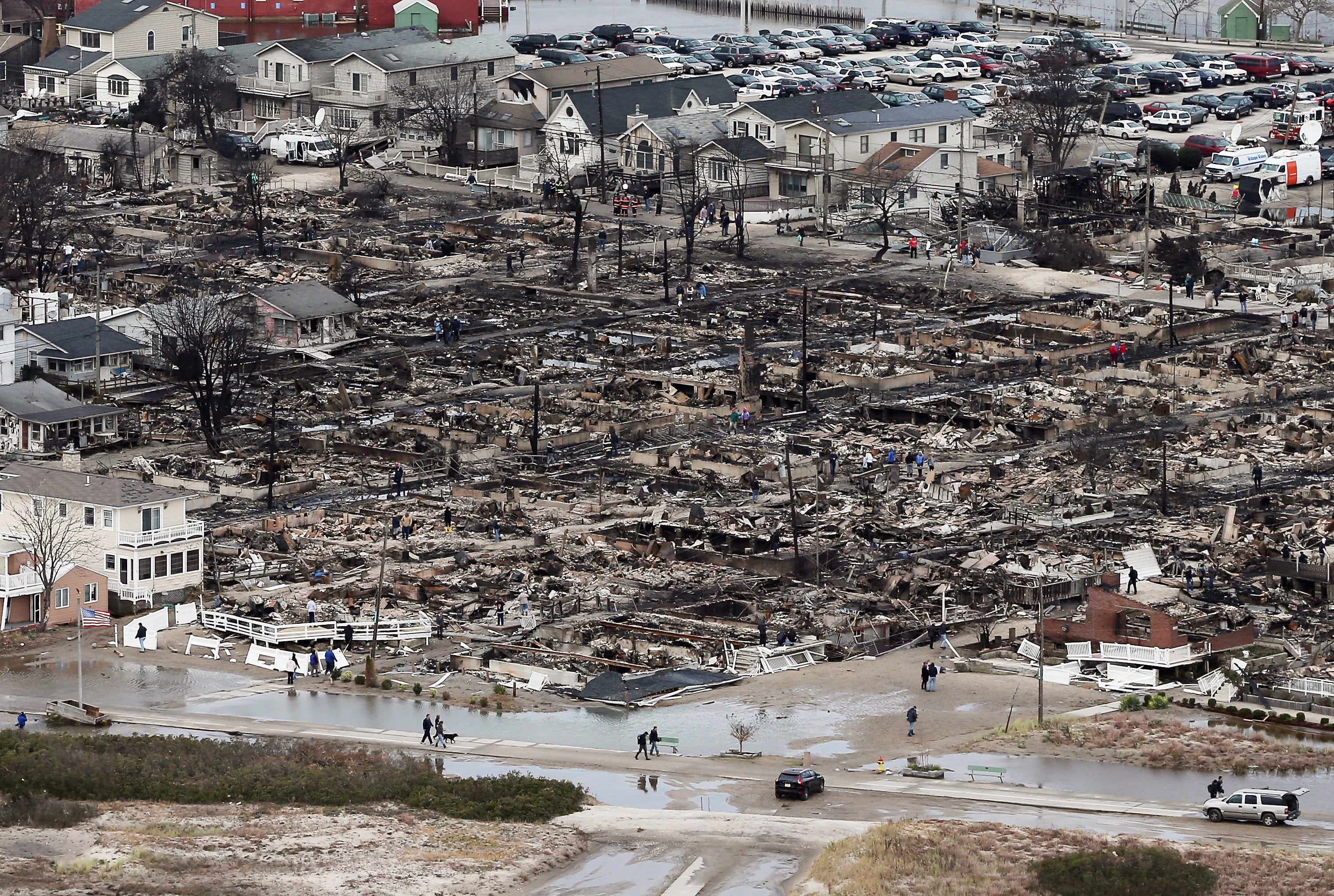
“However the large-scale infrastructure that our city and, quite frankly, everywhere else needs to greet a storm like that is not in place yet. And in many cases, it’s not even designed.”
Nonetheless, more destructive storms march on relentlessly. Two of the top three most active Atlantic hurricane seasons were in 2020 and 2021, with 75 per cent of those storms rapidly intensifying before landfall, according to the non-profit Climate Signals.
Then there is the “nasty property” of sea-level rise, Klaus H. Jacob, a geophysicist at Columbia University’s Climate School, and a former member of the mayor’s panel on climate change, explained this week at the CFR event.
“When you raise sea level, you need ever-smaller storms to reach the same height on the ground. That means with smaller storms, since they are more frequent, the risk is amplified drastically,” he said. In downtown Manhattan, for example, this will make some subway stations 70 times more likely to flood by the end of the century compared to 2000.
Dr Jacob called the near-$20bn allocated so far for climate resiliency “a drop in the bucket”.
“What is really needed to make a metropolitan area like New York City resilient for climate impacts of the future, we don’t even yet have a realistic estimate,” he said.
Defences: ‘The Big U’ and $52bn sea gates
Protecting New York City is particularly challenging as it has 520 miles of coastline - more than than Los Angeles, San Francisco, Miami and Boston combined, Jainey K. Bavishi, former director of the New York City Mayor’s office of climate resiliency, said this week.
“We need to get to a place where every policy and investment decision takes climate change into account,” she said, at the CFR event.
Last year, work began on the $1.45bn East Side Coastal Resiliency Project (ESCR), part of “The Big U” which will eventually wrap around the lower third of Manhattan in a protective collar, buffering future storm surge and sponging up flooding.
The project has been controversial after the city council overhauled plans at the eleventh hour with little warning to local people, many low-income and living in government-subsidized housing, who had spent years involved in the planning process.
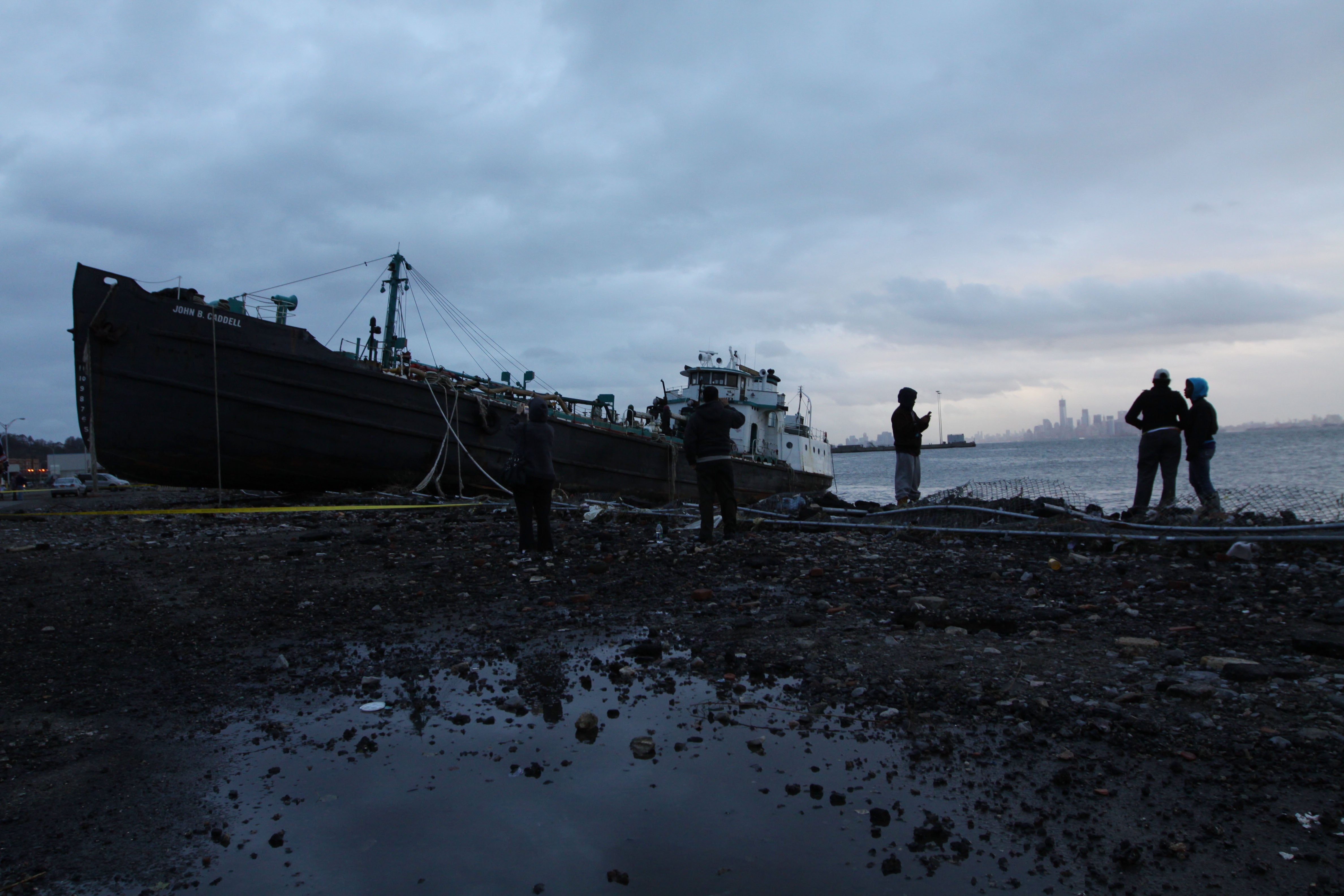
The original plan was for 2.2 miles of additional coastline to absorb storm surge and double as a local park. This was thrown out in favour of burying the current East River Park and building an eight-foot flood wall with a park on top. City officials later apologized for not communicating the changes and promised to do better.
But the biggest, and most expensive, proposal is a series of 12 flood gates, created by the US Army Corps of Engineers, the military branch behind major government construction projects like the Pentagon and Kennedy Space Center.
The Corps had originally proposed a single, massive barrier to protect New York Harbor. However that was scrapped in favor of moveable gates to block waterways during a major storm, along with elevating the shoreline and sea walls, at a price tag of $52bn.
The public can comment on the plans through January, and state and local governments will also need to sign off. Among the concerns already raised is that the barriers would divert flooding to other areas and trap sewage and toxins.
Whatever the final plan looks like, building is not expected to begin until 2030 with a completion date of 2044.
“A lot can happen between now and 2044,” Robert Freudenberg, vice president for energy and environment at the Regional Plan Association, told The Independent. “All that being said, this is the only region-wide plan for adaptation, so you can say it’s the best we have.
“We have to evaluate but if neighborhoods don’t want this, what then? You can’t reject protective measures without having a backup plan.”
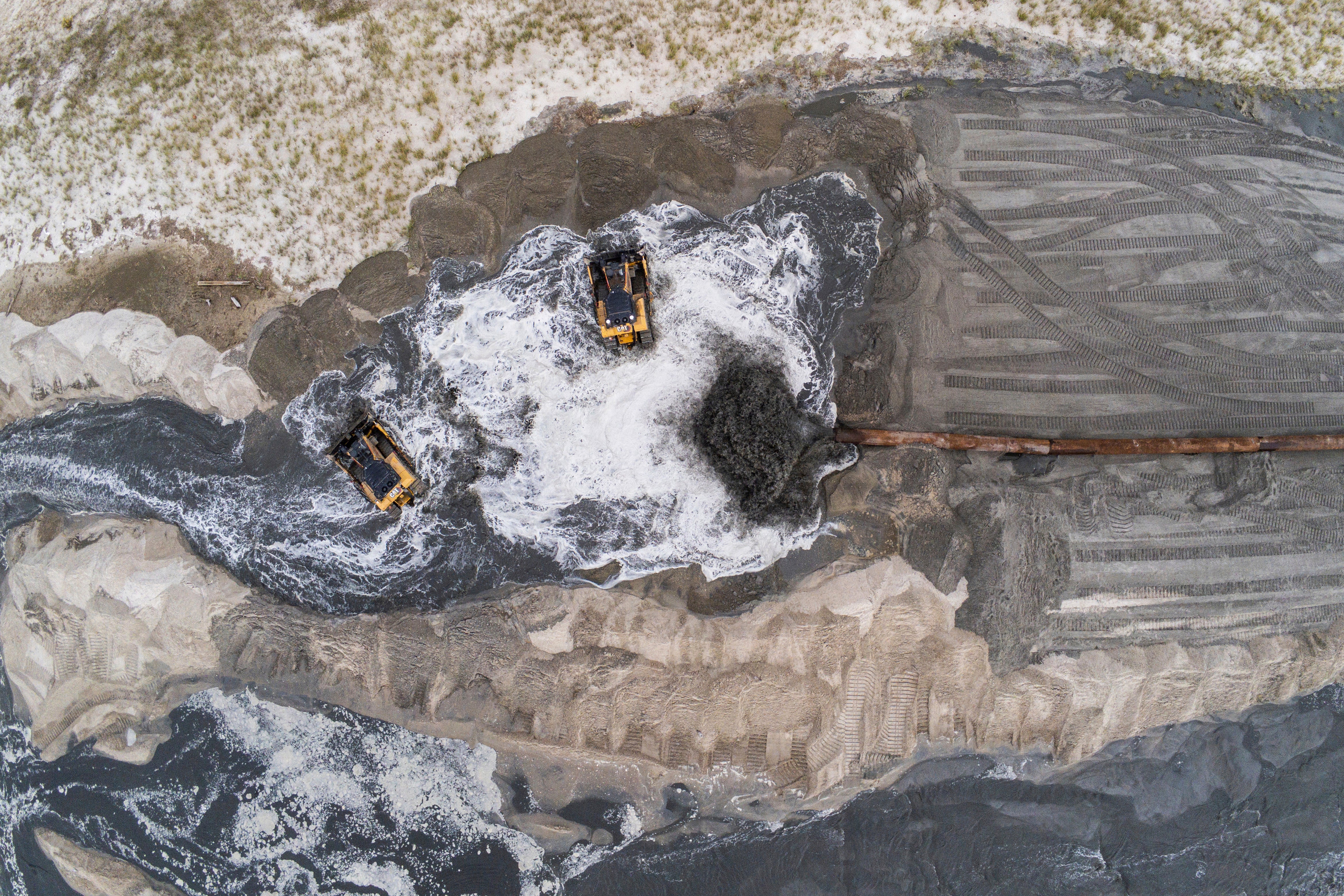
He added: “I think the challenge is that adaptation is hard. Nobody likes change. And no matter what, change is coming to the shoreline - whether sea-level rise, worse storm surges, or infrastructure projects.”
There has been success with nature-based solutions like restoring marshes, dune elevation and beach nourishment, particularly in badly-impacted Jamaica Bay and the Far Rockaways.
There is also ongoing work on the Living Breakwaters project. It is restoring 2,000 linear feet of reef off the New York coast, years after the vibrant razor oyster habitat was overharvested and destroyed.
“Rebuilding that attenuates the waves, rebuilds the sand and beach to protect those coastal areas. It also restores marine life and cleans the water and air,” Katie Brennan, executive director of the New York Governor’s Office of Storm Recovery, told The Independent.
“There’s already crustaceans and creatures moving back into those tide pools. I's amazing to see how this blue-green infrastructure really works with nature to protect us, and how quick and effective it is.”
Housing: ‘Avoiding tough questions isn’t a solution’
In hard-hit waterfront communities, 3,400 homes have been elevated to withstand future storm surges, and three times that number of properties have received funding for repairs and rebuilding.
In areas prone to extreme flooding, even before Sandy, some residents opted for voluntary government buy-outs. In all more than 700 storm-damaged homes were purchased, the largest number on Staten Island.
More than $3bn in repairs were made by the New York Housing Authority after thousands of people in public housing spent months post-Sandy without heat or power. Backup generators have been installed and heating, ventilation and air conditioning (HVAC) systems moved to roofs. Other efforts include constructing flood walls around boilers, and adding storm gates to apartment blocks.
Progress has been painfully slow in places. At Red Hook Houses in Brooklyn, residents waited nearly five years for essential repairs on boilers and roofs, according to the NYC comptroller report.
The larger problem, however, is how New York adapts more of its densely-populated neighborhoods for a future with more extreme storms.
Sandy was a harbinger of the equity issues fused with climate change. Some one million New Yorkers currently face flooding risks, a number projected to more than double by 2100, according to Rebuild By Design. More than half those residents are people of colour and low-income.
“Communities truly understand what they need and unless we’re working with them, we will never be able to create the type of projects and interventions that will be able to solve more than one challenge at a time,” Chester said.
The city issued tighter construction standards after Sandy but it only applied to 3.5 per cent of buildings leaving the overwhelming majority with no obligations to become more flood-proof.
Luxury waterfront developments have continued apace. The value of real estate in the 100-year floodplain - that with a 1 per cent chance of experiencing a major disaster every year - increased by $176bn in the past decade.
If little is done to protect these new buildings, it will “significantly” decline the city’s property tax base “either via abandonment or the implementation of managed retreat programs,” the comptroller said.
The sensitive and complicated issue of “managed retreat” - the voluntary move of people away from vulnerable coastal areas - is only in its nascence, noted Freudenberg.
“How can we ask communities to leave that have already been historically marginalized, and without the housing to move into?” Freudenberg said, alluding to New York City’s public housing shortage of more than half a million homes.
“We need to have a conversation about managed retreat,” he added. “But before that, we need to have a conversation about how there’s not enough affordable housing in the city. You can’t have one without the other.”
The city comptroller noted that any discussions on this issue needs “thoughtful and inclusive processes”.
“Yet, avoiding the tough questions of whether or how to fortify or relocate from a neighborhood is not a solution,” the report warned.
Infrastructure: ‘So much stuff is down there’
Power plants have hardened defences to try to stop the water getting in, and elevated infrastructure in places. Con Edison, whose substation explosion caused the lower Manhattan blackout, has allocated $250m for upgrades.
Renewable energy sources have proliferated and dropped in price in the past decade. At Hunts Point in the Bronx, for example, solar panels and battery storage have been installed at two schools as backups.
Bronzed gates, each weighing nearly 45,000lbs, are now at the mouths of the Lincoln and Holland Tunnels to make them watertight in the event of a major storm.
A $100m “Raise Shorelines” project is elevating low-lying roads which frequently flood with the first phase targeting parts of Brooklyn, Queens and Manhattan including the FDR Drive and East River Esplanade, Gowanus Canal and Old Howard Beach.
Two-thirds of city parks and open spaces lie in flood plans, from Battery Park in lower Manhattan to the Far Rockaways. Since Sandy, the parks department has revamped flooding guidelines for planting, coastal design, and drainage systems on esplanades, beaches, playgrounds, and athletic fields.
A major problem for New York is its underground vulnerability, Fugate noted, as “so much stuff is down there”.
At nine major New York hospitals, generators, diagnostics and labs - all frequently located in basements - have been put on higher floors.
Some flood-risky subway stations have been raised while more than a dozen underground stops were retrofitted with Kevlar-based horizontal lids that can be rolled across entrances to stop water flowing down steps. Subway vents were refitted to shut at a certain water level to prevent a waterfall cascading into tunnels.
“There have been improvements that aren’t visible, particularly to the underground infrastructure, including more resilient features on electrical cables to better survive saltwater inundation,” said Cortney Worrall, president of Waterfront Alliance, a nonprofit which protects coastlines of New York City and northern New Jersey.
Fugate also noted that improving one building or facility in isolation may not expose all the risks that exist. “If you harden a hospital but all the roads around it flood, then you really haven’t changed the outcome for a community,” he said.
For how long can we keep going as before?
Post-Sandy, early warning systems were improved after mixed messages about the storm’s severity due to strict rules over what could and couldn’t be classified as a hurricane. The National Oceanic and Atmospheric Administration subsequently broadened the category of storms for which to issue hurricane warnings, Earth Magazine reported in 2013.
Emergency shelters are being increased to 120,000 citywide and made suitable for disabled New Yorkers who face greater risks when trying to evacuate a major storm.
The September 11 terrorist attacks in New York had led the city to improve its major disaster plans, and Sandy saw another overhaul.
“After Hurricane Sandy, there was enhancement of those materials and an effort to take them to community centers and nonprofit groups to make sure that people knew more on what to do,” Worrall told The Independent.
And the work continues. An upgraded emergency plan was announced following Hurricane Ida to help New Yorkers better prepare for and monitor extreme rainfall, including a “Notify NYC” app.
RISE:NYC, a city program supporting tech innovations, has funded goTenna which allows users to create a “mesh network” - using multiple cell phones as a single Wi-Fi site - if citywide service fails.
“There’s no one-size-fits-all solution,” Brennan said. “We have to be prepared to address a Sandy-like storm as well as other extreme weather events including rainstorms, like Hurricane Ida, riverine flooding, extreme heat. We know that it’s a matter of when - and not if - so resiliency is forever a work in progress.”
___________________________________
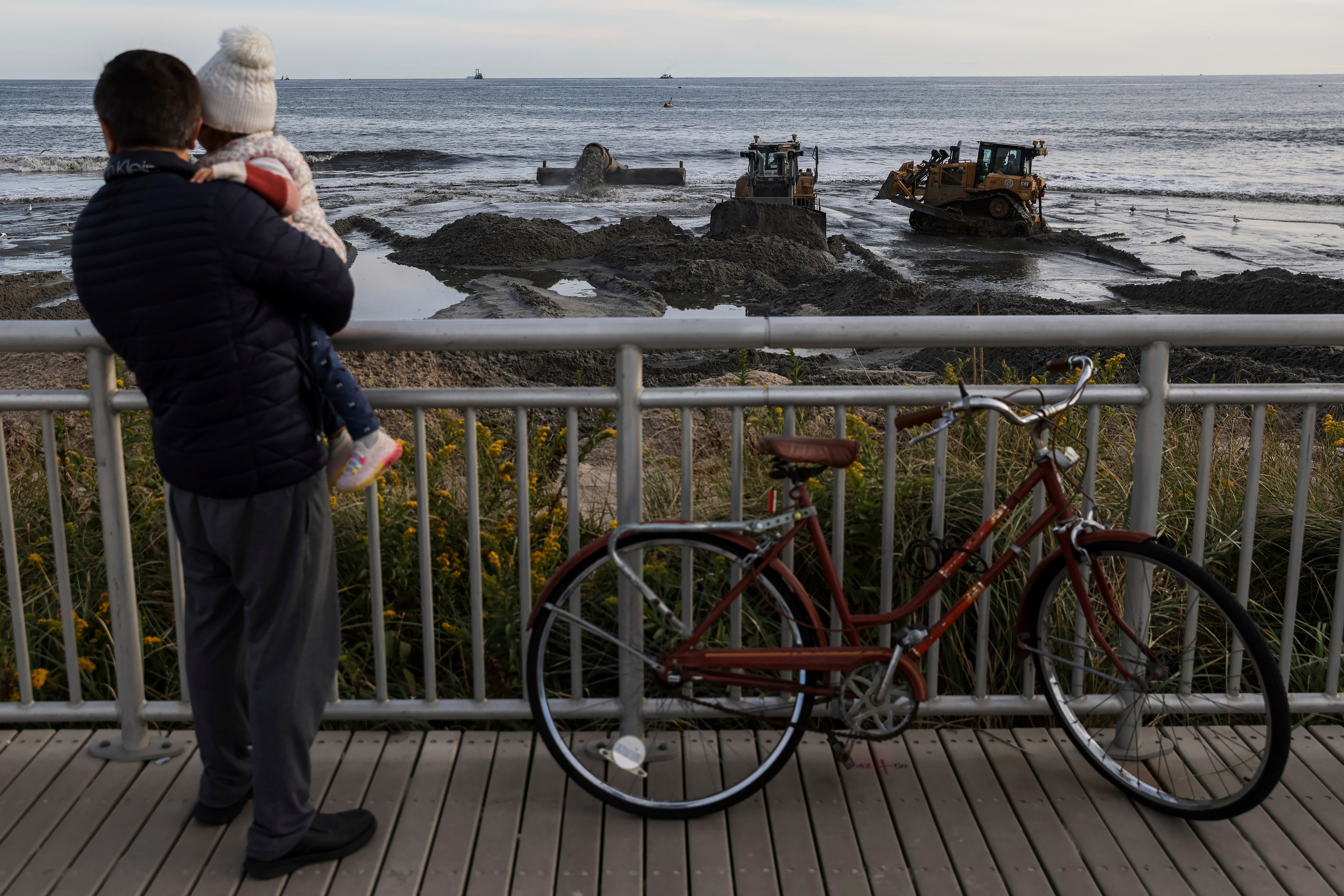
Yet at the heart of Sandy’s legacy is a lingering, existential question, one that the climate crisis is forcing more and more communities to contemplate: For how long can we keep going as before?
For some New Yorkers, Sandy meant the end of living along the coast. For others, it presented an opportunity to move closer to the ocean.
“Sandy was a tremendous, cautionary tale for us about damage from the coast,” Freudenberg said, “But humans want to get as much out of something in the time that we have.”
He noted that New York City had not yet seen a storm that packed the extreme rainfall of Ida and Sandy’s coastal flooding.
“That’s the one that scares me the most,” he said. “It demonstrates how hard it is to stay ahead of climate impacts because we don’t even necessarily know how they’re going to come. We can only react and do our best to plan.
“I think the message when looking back at Sandy is to make sure we look ahead at what else is coming.”
Join our commenting forum
Join thought-provoking conversations, follow other Independent readers and see their replies
Comments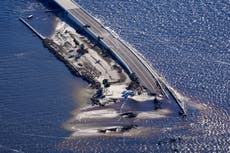
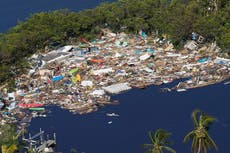
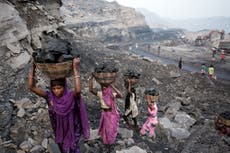
Bookmark popover
Removed from bookmarks